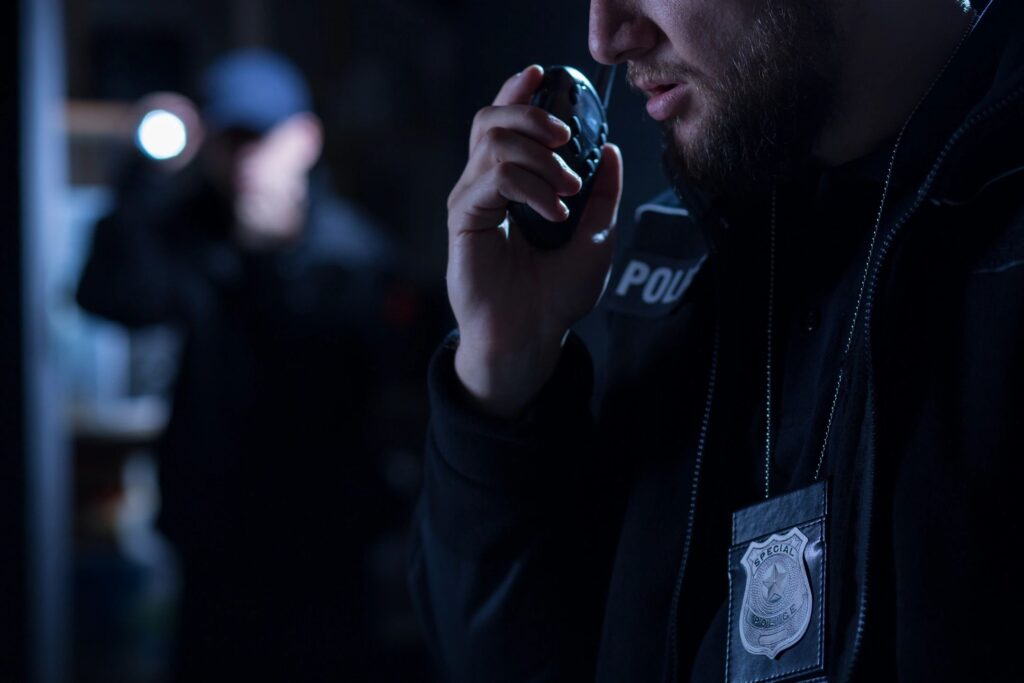Mixed Response to Ohio Body-Camera Legislation


Mixed Response to Ohio Body-Camera Legislation
By Troy Pierson
Kent State/Ohio News Service Collaboration
COLUMBUS, Ohio — Legislators in Ohio are considering a bill that would require police officers to wear body-worn cameras, but some in law enforcement disagree with aspects of the bill, including the proposed timeframe to publicly release footage if police misconduct is alleged.
House Bill 367, introduced in July by Rep. Dontavius Jarrells, D-Columbus, aims to clarify Ohio law on how officers use their body cameras. while performing their duties.
“When we think about proactive legislation, [we need] to make sure when our law enforcement officers have their body cameras on,” Jarrells said. “Two, when there’s allegations of a misconduct, what is the proper procedure to receive such footage? And then three, when it comes to the extended training of those body cameras, there wasn’t enough specificity in our code related to that conduct in those processes.”
The catalyst for the bill is the death of Andre Hill, a 47-year-old Black man who was killed by an officer in late December. Columbus Police Officer Adam Coy failed to turn on his body camera during the incident and shot Hill four times while Hill was walking outside his garage and talking on his cell phone.
As of May, seven states now mandate that officers wear body cameras.
“This bill [is] in honor of Andre Hill,” Jarrells said. “We wanted to make sure that we created the opportunity to provide transparency when their loved one or when a loved one is killed by a law enforcement officer.”
Rep. Kristin Boggs, D-Columbus, said she thinks this bill would provide an opportunity for law enforcement to establish better relationships with minority communities.
“I certainly think [this bill] provides a better sense of security that officers will be acting appropriately,” Boggs said. “And if an officer is engaging in inappropriate conduct that there will be documentation of that, whereas historically, those incidences have not necessarily been documented, which is why a critical piece of this bill is providing the expectation that the officer will not tamper with the equipment in an inappropriate way, and the officer will always be using this equipment when engaging with the community.”
The bill includes:
A 21-day mandate for police to release unedited footage to the public if someone complains of police misconduct; if footage interferes with an ongoing investigation, police have a 45-day timeline to release it.
A requirement that if law enforcement agencies receive a waiver from a person who accuses an officer of misconduct, police cannot redact, obscure or withhold footage.
A requirement that all law enforcement agencies provide body-worn cameras for each officer and correctional officer by July 1, 2023. Those agencies can apply to the state attorney general for funds to purchase body cameras.
Sidney Police Chief William Balling, former executive of the Ohio Association of Chiefs of Police (OACP), said the 21-day mandate to release unedited footage does not offer law enforcement enough time to analyze footage if a misconduct complaint is made. Personal and private liberties may be violated.
“When you say you release an unedited version, it may have whole security numbers [and] private sensitive information on it from an individual that we’re not allowed to release per public record law, and that’s for their protection,” Balling said. “We’re supposed to black that out, and we can’t do it [under this bill].”
Balling also said the provision mandating that all officers to have body cameras by 2023 is not a likely goal, as current state funding cannot cover the costs of equipment.
Ohio Gov. Mike DeWine allocated a $10 million grant in February to provide agencies with body cameras, but Balling said this amount is too low. The bill does not include details about funding for storing the footage or a fully detailed retention schedule for the equipment.
“This bill is a little short-sighted on economics,” Balling said. “My officers had body cameras for the last four to five years. We love them, but there’s a huge cost to maintaining a body-camera program. And who’s gonna pay for all the body cameras for places that don’t have it? You have to look beyond the surface sometimes to get the answers, and I’m afraid this is a surface bill.”
The cost to purchase body cameras and store the footage varies based on state laws and budgets. One police department in Arlington, Virginia, decided not to adopt body cameras when it determined the pilot program would cost them $300,000 a year.
While Jarrells said the bill does not detail how state money would cover body-camera equipment to reach the 2023 deadline, he aims to push this bill through the General Assembly first, and later create additional legislation that covers funding.
“The hope is that [this] timeline will spur conversation as to how do we begin to really move our entire state forward to making sure that all police officers and all law enforcement officers have a body camera, and we have the system capable of supporting those officers and the data,” he said. “This robust timeline is a goal that I think we can obtain, and I’m looking forward to having conversations with our law enforcement partners to make sure that we can address any of the critical issues to hitting that goal.”
The bill will receive a committee hearing in September when the General Assembly returns to session.
—
This story is a collaboration between Kent State, Ohio News Connection and Public News Service, produced in association with Media in the Public Interest and funded in part by the George Gund Foundation.









